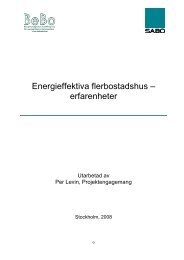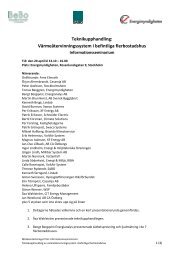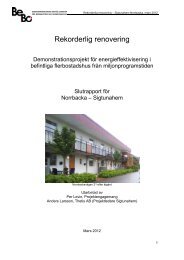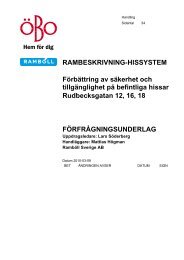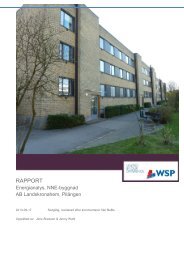Rapporten från etapp 1 - BeBo
Rapporten från etapp 1 - BeBo
Rapporten från etapp 1 - BeBo
You also want an ePaper? Increase the reach of your titles
YUMPU automatically turns print PDFs into web optimized ePapers that Google loves.
Figure 8. The small area duct is in the foreground and large area<br />
duct is in the background connected to the pressure tap.<br />
For the large area duct results, the<br />
pressure drop at twelve liters per<br />
second is most interesting with the<br />
observed air speed of approximately<br />
1,53 meters per second. The<br />
dimension of this duct will contain<br />
twelve liters per second air flow to<br />
feed radial ducts of smaller air flows.<br />
Therefore, upon observing Figure 3,<br />
the pressure drop for both the large<br />
area duct and the small area duct<br />
with respect to their optimal air<br />
flows falls near 40 Pa. The limit, in<br />
grey, is an area where a compromise<br />
of pressure drops can be made for<br />
both duct areas.<br />
Observing the sound level results, the decibel readings are all the same because of the<br />
background noise in the laboratory affected the results. Even still, it can be observed that<br />
no extra sound occurs when the flow is increased.<br />
Conclusions<br />
For each duct, it is possible to combine them into a ventilation system to provide seven<br />
liters per second air into a room. The large area duct can supply the smaller area ducts at<br />
roughly the same pressure drop, thereby simplifying the fan requirements on the supply<br />
air side. As well, sound levels do not increase when the flow is increased in the large area<br />
duct.<br />
Bilaga 5 sid 6 (6)<br />
6





